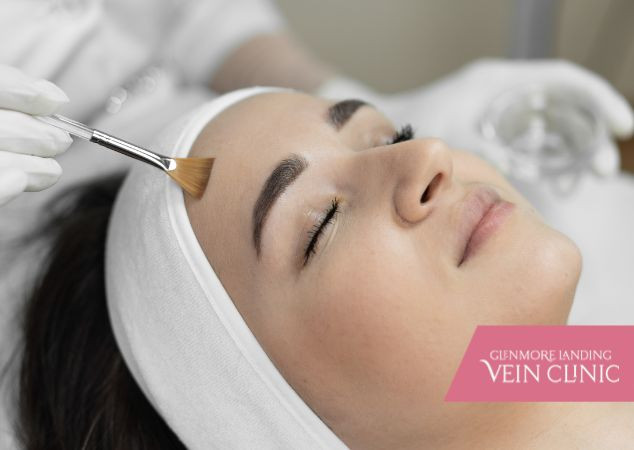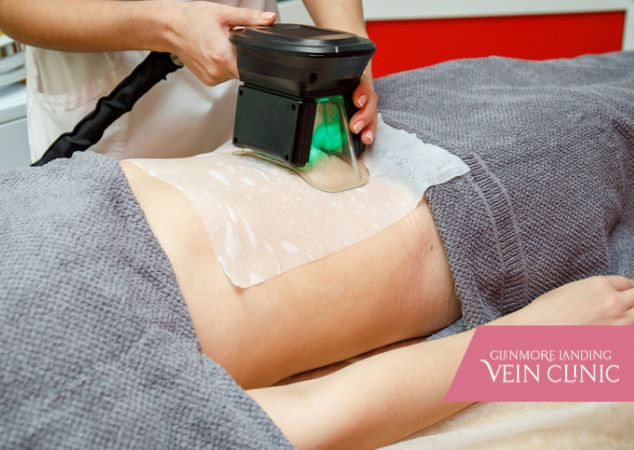Chemical peels offer solutions to a wide variety of skin concerns such as acne, sun damage, fine lines and wrinkles, and hyperpigmentation. This minimally invasive cosmetic treatment uses common skincare ingredients such as salicylic acid and glycolic acid to chemically peel layers of the skin to reveal new, healthy skin below. Your specialist will customize a chemical peel treatment to your skin concern by differing which acids are used and how deeply they exfoliate your skin. Since peels temporarily compromise your skin's outermost protective barrier, it is extremely important that following your chemical peel you take extra precautions and allow new skin layers to properly heal. If not taken care of correctly, you can disrupt your skin's natural healing cycle which can lead to infection, and interfere with the chemical peel results.
Book Your Free Consultation Contact Us Today!
Correctly Take Care of Your Skin Following A Chemical Peel
Chemical peeling agents remove the superficial layers of the skin to promote the growth of a new and healthy top skin layer. Depending on your skin sensitivity and strength of the peel, you may experience several side effects such as redness and itchiness as well as different lengths of recovery times. Before your appointment, your specialist will discuss which treatment is the best fit for your skin as well as what you can expect for your skin's recovery time. To ensure proper care and faster healing times, here are a few tips to help your skin heal properly after a chemical peel:
Do: Protect Your Skin With SPF
After a chemical peel, your skin will be extremely sensitive to the sun, increasing the chances of heat and sun exposure causing inflammation, irritation, and even more visible signs of aging. It is recommended that you use a minimum of SPF 30 on your face and limit your skin's sun exposure as much as possible for the first week following your appointment. Make sure to always continuously apply SPF throughout the day if you plan on being outside.
Do: Only Use Gentle Cleansers
Your skin will be very delicate and vulnerable following a chemical peel. Treat your skin with care and avoid using cleansing tools or any harsh, exfoliating face cleansers. Over-washing your skin will cause more irritation and will prevent the new healthy layers of skin to form. Once your skin has finished the healing process, you can then start slowly re-introducing your regular skincare routine.
Do: Moisturize And Hydrate
After a chemical peel treatment, your skin may feel tight, dry, and itchy. Since your skin's protective barrier is temporarily compromised until the healing process is complete, applying a hydrating moisturizer or serum can help alleviate the dry and itchy feeling. Keep in mind that your skin's layers need to peel away to reveal the new healthy skin underneath. Be careful not to moisturize excessively as it can prevent those layers from peeling off. To get the full benefits of the chemical peel, you need to allow these layers to shed and peel off on their own.
Don’t: Over Exfoliate
After a chemical peel, it can be extremely tempting to pick or scrub away at your peeling skin. Chemical peels are extreme exfoliants so any extra scrubbing or harsh chemicals on the skin after a peel will only irritate the skin further can disrupt the skin's healing process. Trust the process and only use gentle cleansers with warm (not hot) water without harsh scrubbing.
Don’t: Use Excessive Heat
Avoid environments and activities that promote heat such as saunas, exercise, jacuzzis, and hot showers. Increased blood circulation to the face will enhance redness and irritation to the skin and will cause the skin to become itchy.
Don’t: Pick, Scratch or Touch
Much like a sunburn, your first instinct at the sight of peeling skin will be to pick it off. Avoiding the urge to scratch an itch or to pull a layer of dead skin can be extremely difficult but also extremely important. Manipulating the skin's natural healing process can result in infections and harm the skin's new, healthy layers.
Want To Experience The Benefits Of Chemical Peels?
If you are interested in the many benefits that chemical peels have to offer, our specialists can provide you with an affordable peel solution that addresses your unique skin concerns. Our team will be with you every step of the way and will address any questions or concerns you have about the healing process.
To find out more about our chemical peel services, visit us at Glenmore Landing Vein Clinic D 267, 1600 - 90th Avenue SW, Calgary, AB.
Contact us today at (403) 253-2555 or fill in our online contact form.
FAQ's
How long does it take to recover from a chemical peel?
Expect your skin to peel for 3-10 days after your treatment. The type of chemical peel that your dermatologist recommends will impact the length of recovery for your skin. Your skin type will also determine the length it takes to recover and differs from person to person. Heavier-depth peels will take longer whereas light peels may only take 3-5 or your skin to complete the peeling stage to allow growth of the new skin.
What are the possible side effects?
Side effects of chemical peels can be avoided by seeing a trusted, certified specialist and by correctly taking care of your skin following the treatment. However, possible side effects can include:
- Scarring
- Lighter skin tone
- Persistent redness for longer than a month
- Itchiness
- Patchy skin tones
If you experience any side effects, see your dermatologist as soon as possible.
How long do results last?
Results will vary from person to person due to different skin types, treatments, and how well you take care of your skin following a treatment. Most results last from a few months to years.





%20(1).png)
